My Jamaican connection
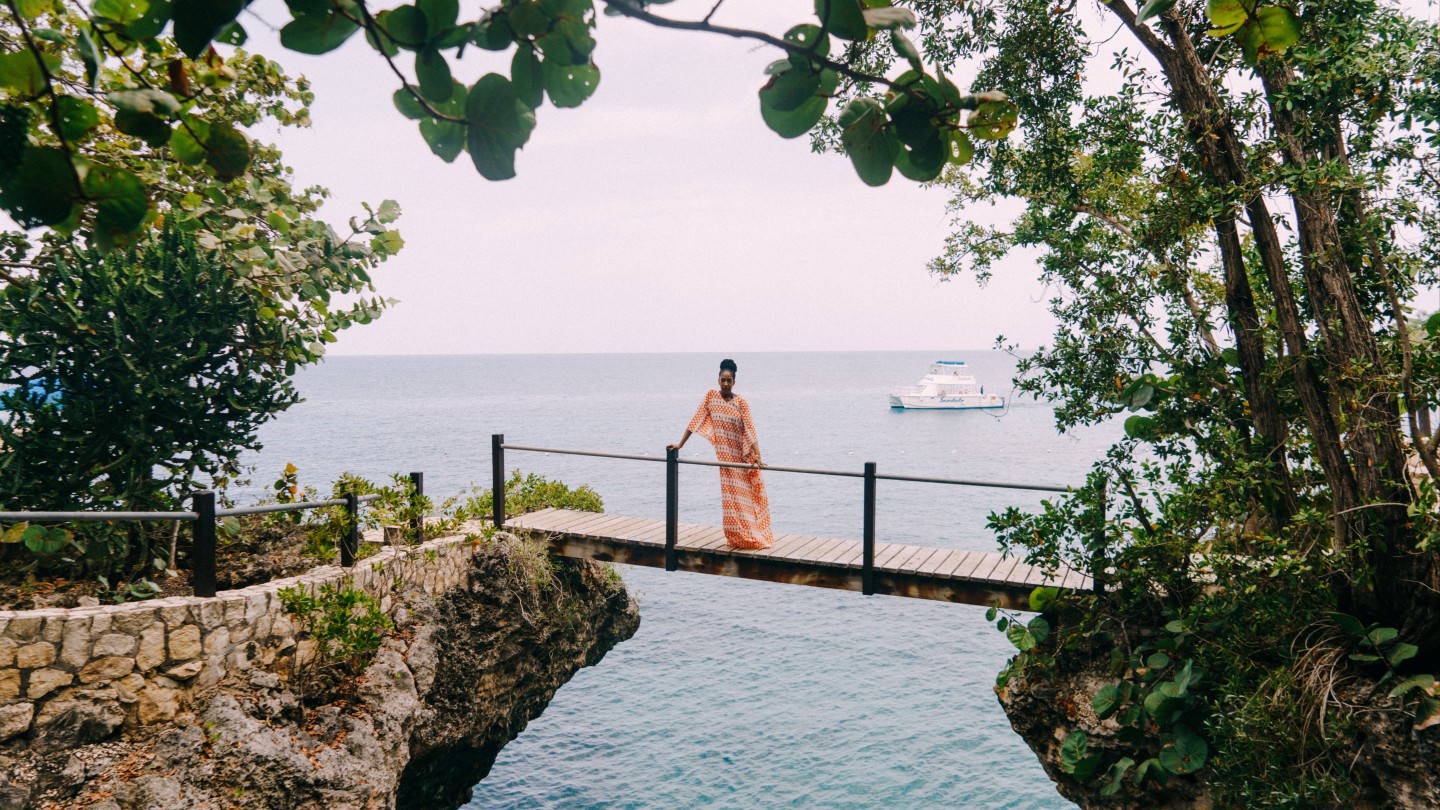
Roula Khalaf, Editor of the FT, selects her favourite stories in this weekly newsletter.
The plane glides smoothly onto the tarmac at Sangster International Airport in Montego Bay, Jamaica, a country renowned for its pristine sun-filled beaches and Blue Mountains, its coffee and rum, and of course, Bob Marley. I share a birthday with the reggae legend, and his music, because of my father’s devotion to it, was a soundtrack of my youth. My thoughts on Jamaica are woven from threads of childhood affection, sentimentality and deep curiosity about a country I have never been to until now. This year marks Jamaica’s 60th year of independence from the British empire, which took place just two years after my own country of Nigeria.
Within a few minutes of leaving the airport, passing through beautiful stretches of country, thick with dense green bushes and banana trees, I feel strangely at home. Darby, the driver, welcomes me with a quick geography lesson. The lilt in his voice is a small ocean wave, rising and falling in unfamiliar places between syllables. “We in the parish of Saint James. You know, the island divided into 14 parishes. And we gon pass through four to get ya to St Mary’s for GoldenEye.”
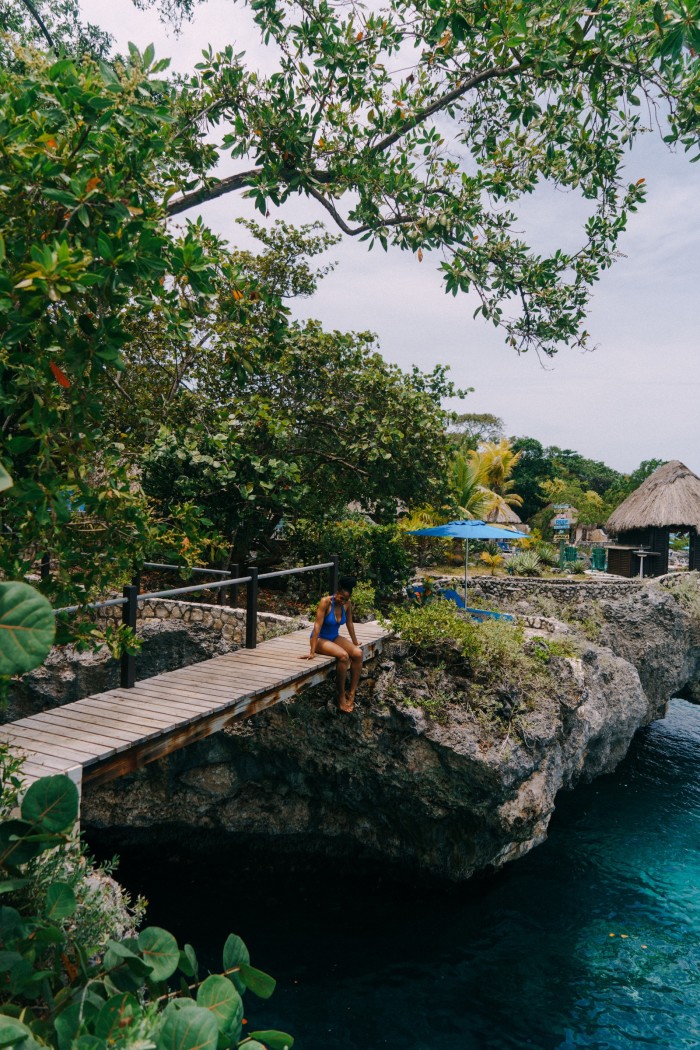
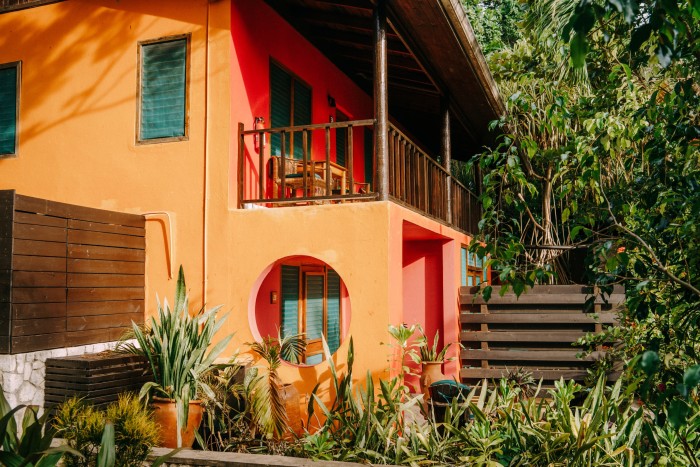
I’ve come to visit two distinctly different manifestations of hospitality. GoldenEye is in the small north-eastern fishing town of Oracabessa, while Rockhouse is across the island in Negril, a stone’s throw from the white sands of Seven Mile Beach. Both places are owned by committed foreigners who love the country; I imagined spending time in each would give me a sense of how they created and maintain a deep and thriving relationship with the Jamaican communities hosting them.
It’s a two-hour ride along the northern coastline from Montego Bay east to GoldenEye. On the way I catch an occasional expanse of the Caribbean sea, calm in the late morning sunlight. In St Ann’s parish, Darby points out where Marcus Garvey, Jamaica’s first national hero, and Bob Marley were born. In St Mary’s parish, we pass the small Ian Fleming International Airport, where I see the sign for Oracabessa, location of his famous Jamaican estate.
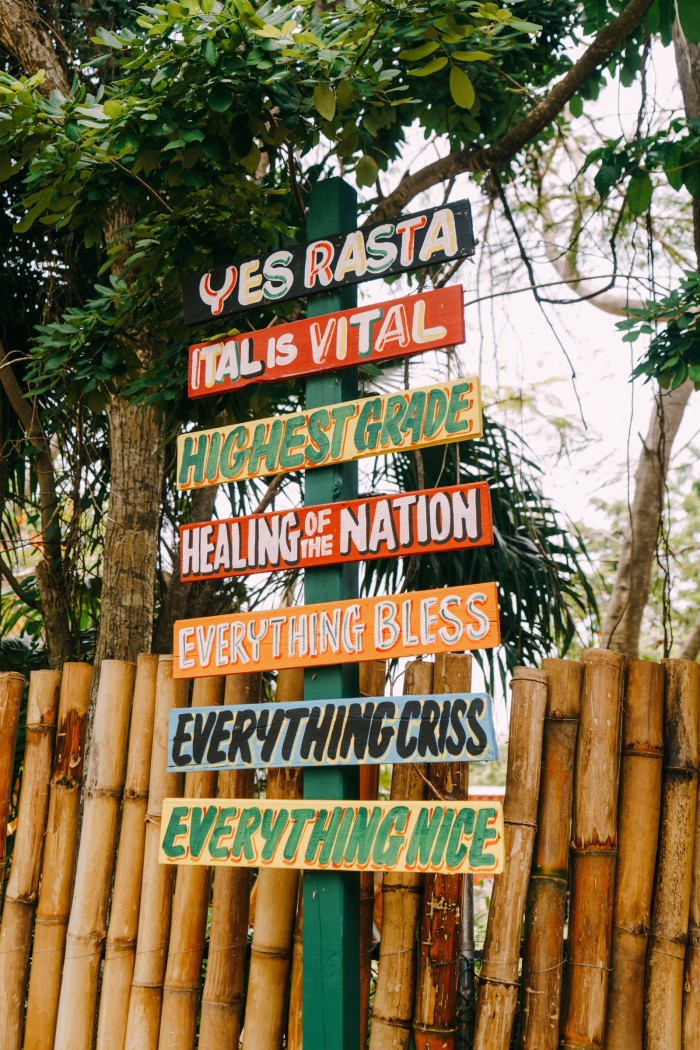
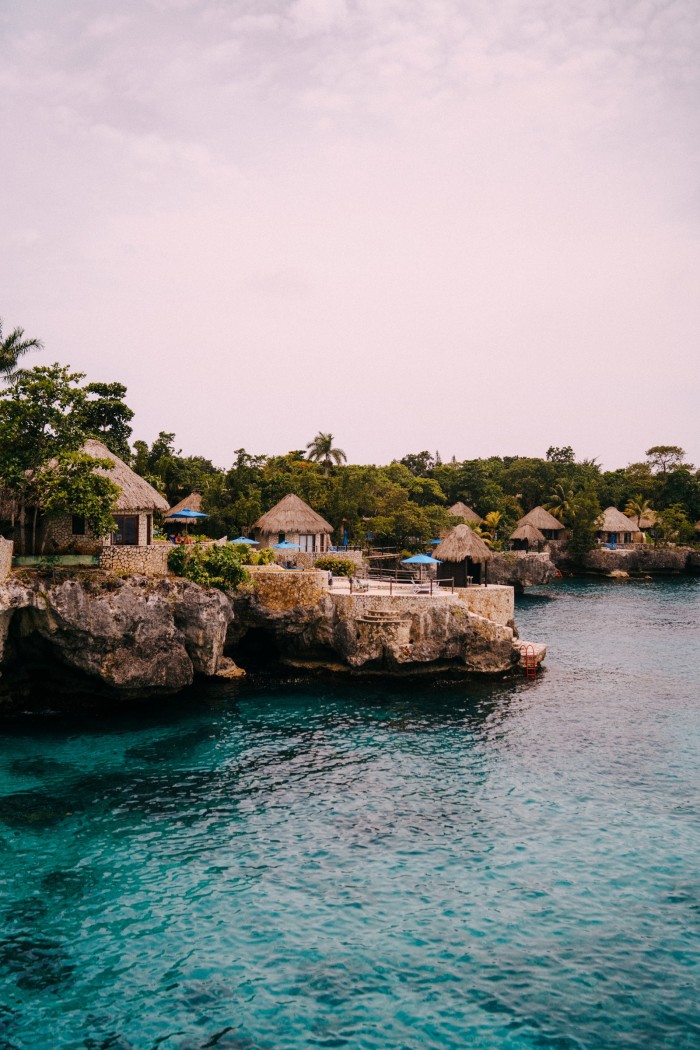
It’s easy to miss the nondescript entrance to GoldenEye – a wrought-iron gate flanked by two stone walls. Down the long, unpaved road is the reception entrance, where the walls in the airy, high-ceilinged Ian Fleming reception room hold framed newspaper clippings and photographs of Fleming and past guests, and stills from scenes of James Bond movies. Large, louvred, wooden windows overlook the blue lagoon, and just steps below the GoldenEye bridge is the beach and the vast turquoise sea. The property feels strangely quiet and empty. I remember what Darby had said in the car: “The place is unique. Even if it’s full, it’s like there’s nobody there.” It seems a place where privacy, rest and rejuvenation are more the concern than tourism, but I’m promised that there are plenty of activities to occupy me if I’m given to active holidaying, among them snorkelling, paddleboarding and yoga.
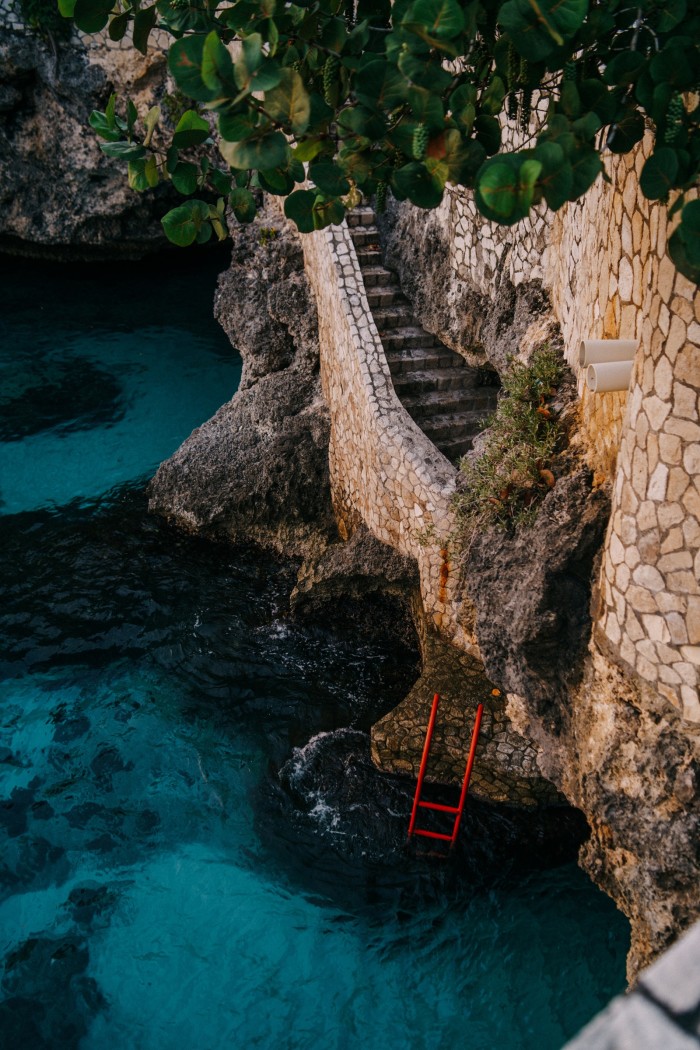
GoldenEye is a mix of private lagoon-front villas, a hamlet of beach huts and a cluster of cottages – with room for close to 50 scattered amid the lush green plant life. There are private beaches, pools and secluded coves, a spa accessible by foot or kayak, and small open-air restaurants and bars. I spend a few nights in a modestly furnished but beautiful beach hut at the end of a short, winding path inlaid with stone. The small veranda overlooks Oracabessa Bay, with indescribable sunsets each evening. Each morning I rise early to a thick quiet and the soft lapping of water, and can see a small boat of men out in the distance.
During my stay I encounter only a handful of guests, mostly during meals at Bizot, the open-air restaurant right by the beautiful salt-water pool shaped like a blue eye. The surrounding waters, the remarkable quiet, sprinkled only with bird sounds or waves, the lush greenery and open, sandy beaches: I quickly realise that these are the natural elements that make GoldenEye a luxury destination. There are no extravagances in the lodgings; rather there is a clean, natural, unencumbered aesthetic to the place – large windows, airy, white linens and wood floors that offer guests space to breathe and unclutter their minds. It’s one of the most peaceful places I have been to in a long while.
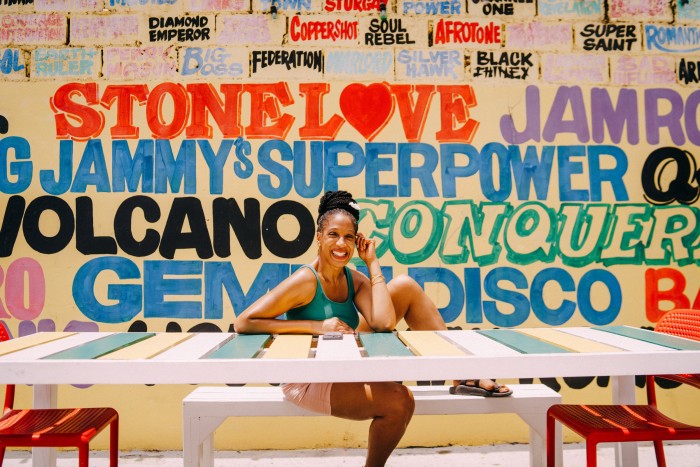
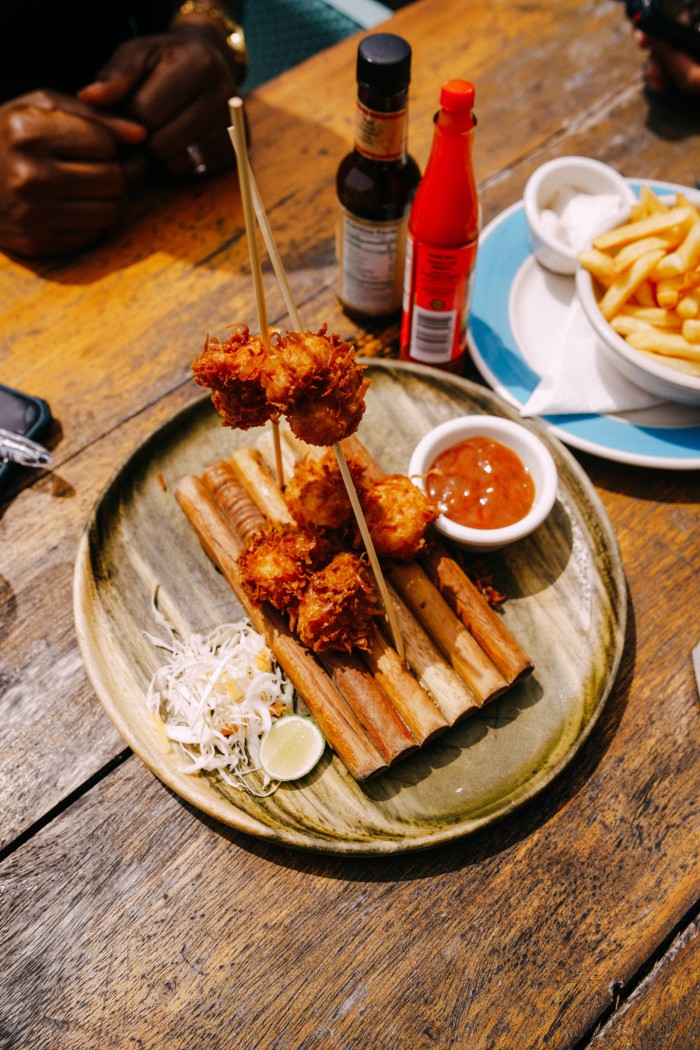
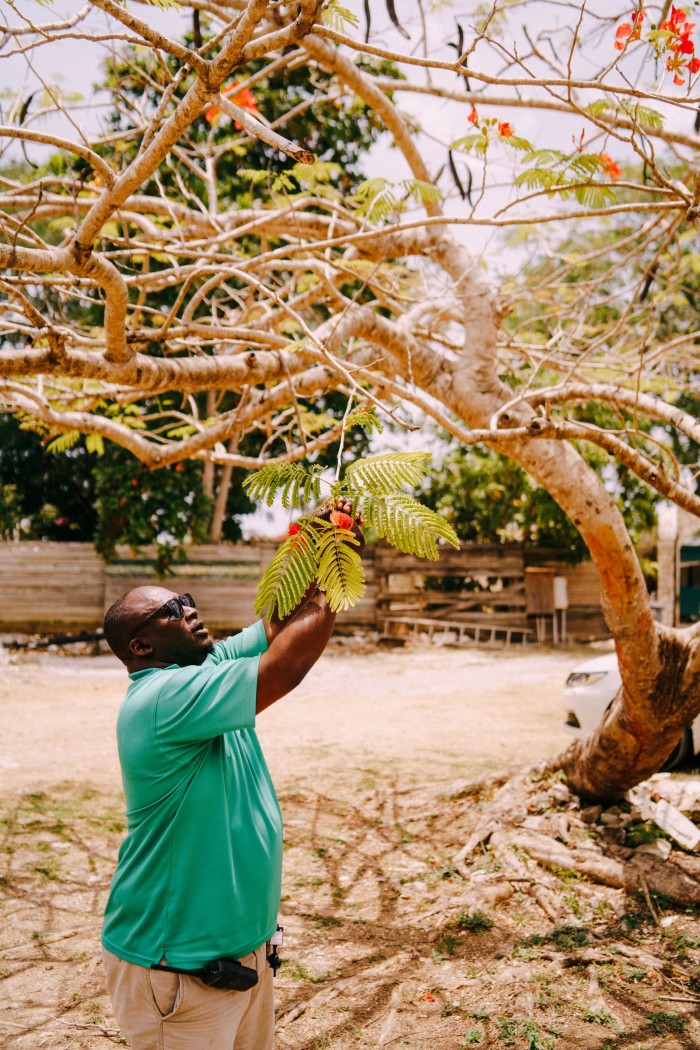
But peaceful doesn’t mean languishing. The property staff and extended team members are actively busy in the community with the programmes and initiatives of the GoldenEye Foundation at Oracabessa Bay, established in 1995. I spend time with Travis Graham, the executive director of the Foundation. As he shares his experiences leading its commitments to foster more sustainable development in Oracabessa and the environment, it’s obvious it’s more than just a job. There is a personal investment here in supporting the livelihood and development of members of the Oracabessa community, and helping build educational and employable skills, like the coding summer camp that began this past July and is now offered as an official course.
Last year, the Foundation began a new agro-business and technical-support programme offering staff members and others in the tourism sector the opportunity to start farm businesses as a sustainable livelihood. It’s a nine-month-long training, and the initial group of participants graduated in December. As the second class begins, the programme will be opened to the wider community. The Foundation also has an Oracabessa Bay Fish Sanctuary in partnership with local fishermen, focused on a variety of wconservation programs and initiatives. There is a coral reef rehabilitation programme, and the 93-hectare Sanctuary’s boundaries mean no fishing is allowed within two miles of the property. The weekend I am there, a community service day has been organised and a large number of staff who are off work, including the resident manager, go out into the town at 8am and begin cleaning the streets and the beach coastlines, with divers also doing an underwater cleanup of debris.
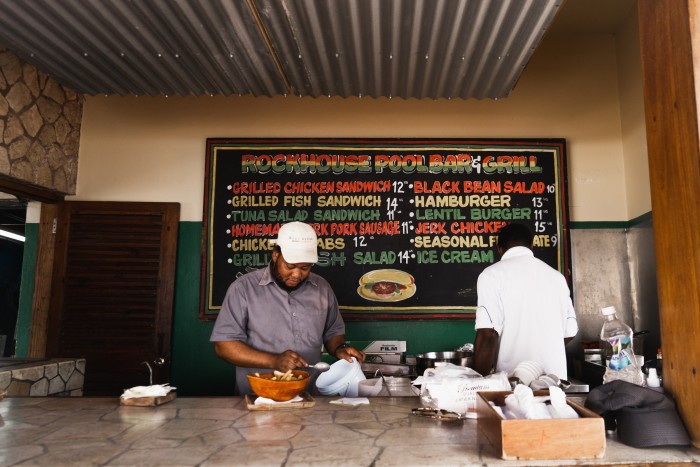
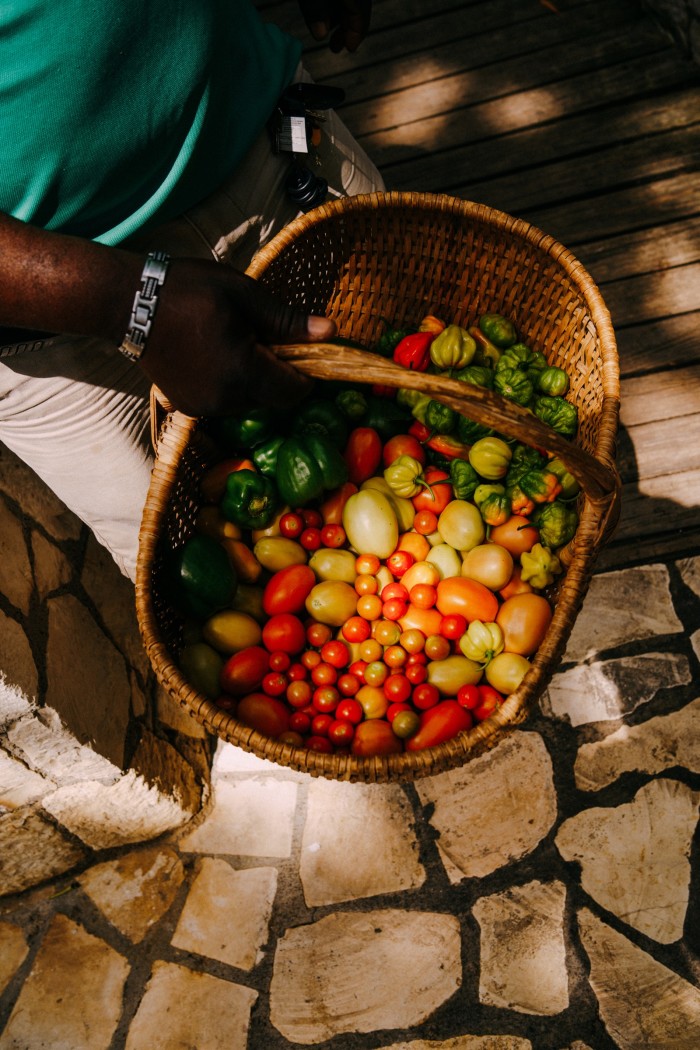
I ask one of the team, Avid, about working at GoldenEye and he confesses that he actually left for a few years to work at another big hospitality property in Jamaica before deciding to return. “It’s just so natural here,” he says of his decision. “You get to be yourself. Elsewhere is so… Americanised.”
It’s a four-hour drive across the island to Rockhouse Hotel in Negril, at the westernmost point in Jamaica. Negril is split over two parishes, Hanover and Westmoreland, and freckled between them are small communities. Rockhouse, a boutique proposition, officially opened as a hotel in 1973, passing through a few hands before Paul Salmon, an Australian, bought it in 1994. From the outset, Salmon brought real intention to what a blueprint for a responsible hotel in a developing economy could look like. Today, Rockhouse is a 40-room, Green Globe-certified property, perched on cliffs on the edge of the Caribbean and focused on sustainable and responsible hospitality for both guests who visit and the surrounding community. Rockhouse is retreat-like, with thatched-roof, tile-walled villas protruding out of the cut-stone cliffsides, a cluster of garden villas, large ocean-view suites, and deluxe and standard rooms. There is also a full-service spa, three restaurants, an organic farm and plant nursery, a woodwork shop and separate facilities for producing spa products and candles.
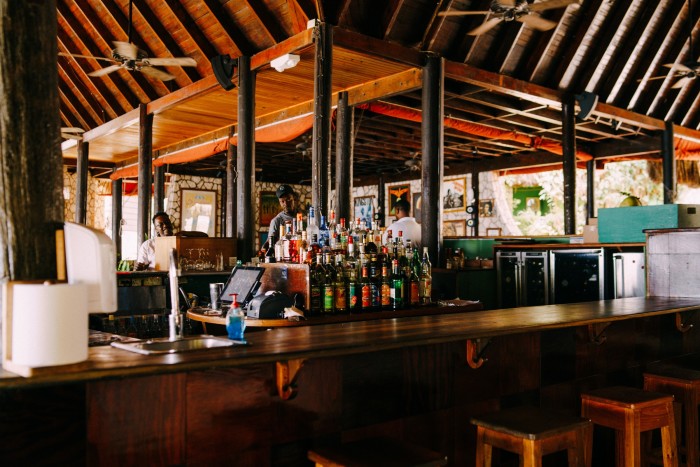

By the third day, I am used to the buzz and vibrancy here. I can hear the splashing as guests jump straight off the small walkway bridge into the bright blue waters of Pristine Cove. Evenings at the Rockhouse restaurant bring in a diverse crowd from the community or other nearby hotels. They come for the slow-cooked pork or the “Old Time Synting” – made with crayfish, calamari, snapper and shrimp – as reggae thumps at a steady volume from the loudspeakers by the bar.
But it’s also a place where the staff members have forged a strong sense of ownership and belonging. I meet with Bally, who oversees landscaping and gardening and tends the hotel’s organic farm, on the morning of my first full day. Short and stout, he’s been working for Rockhouse for 20 years, and this particular morning he is eager to show me around the farm across the road from the hotel.
“You can just pick anything you see.” He points me towards the 12 raised beds. “We have a lot of tomatoes, basil and kale. We also grow scotch bonnet, pineapple, callaloo and avocados.” I see everything from the compost piles to the 13,000 gallons of harvested rainwater collected for the farm. Bally then adds on a tour of the woodworking shop, where all the hotel furniture is made. Pride permeates his words and bearing, as though he owns a stake in it all. I ask him what has kept him here for 20 years.
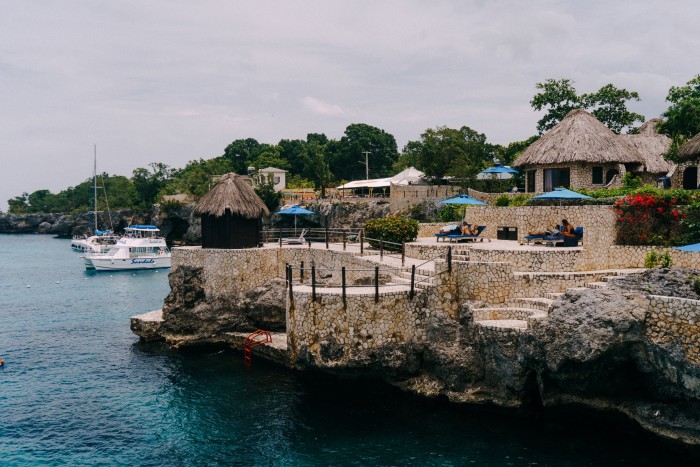
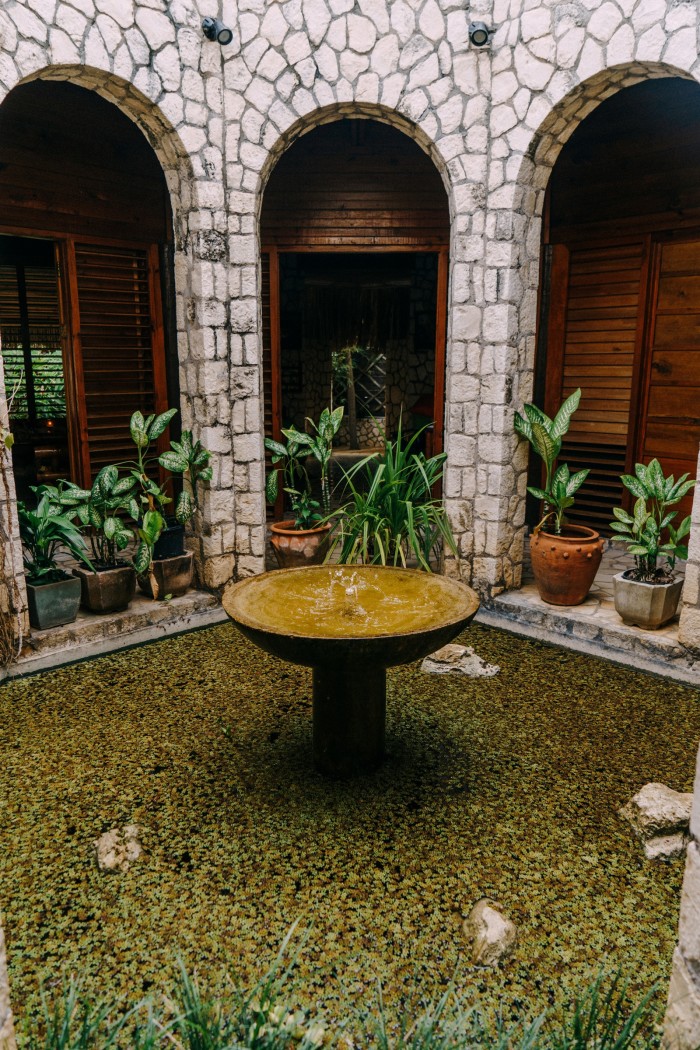
“They treat me well. They are good people. Why would I leave good people?” He points over to an older man standing a short distance from us. “That’s Dwight. He the food and beverages man. He been here longer than me.” He motions to Dwight to join us. “She asking, why we stay long at Rockhouse?”
Dwight replies. “I been here 26 years,” he tells me. “It’s like a family. You can’t break up with your family. You gonna have good days and bad days but at the end it’s family and you have to figure it out together. It’s hard to explain the love and connection we have. It’s not because they are the owners or a company. They make you feel a real part of things. It’s just a vibe I can’t explain. You gotta open my mind to see what I mean.”
As Bally ushers me forward, he touches Dwight on the shoulder and says, “Big up.” I turn to him and ask what that means, because I keep hearing people use it. “It means, everything is good. Love up yourself.”
I come to realise there are ways in which the hotel at times feels like an extension of the wider community. I see this when I meet with Peter B Rose, the president of the Rockhouse Foundation, who picks me up at reception – a thin man with a shaved head, neatly trimmed white beard and moustache, and soft wrinkles at the sides of his eyes. He’s dressed in leather flip flops, well-worn light blue jeans and a navy Rockhouse Foundation T-shirt. He’s promised me a tour of the Savanna-la-Mar Inclusive Infant Academy – Sav Inclusive, for short – a school for both what he terms “typical learning” children and children with disabilities.
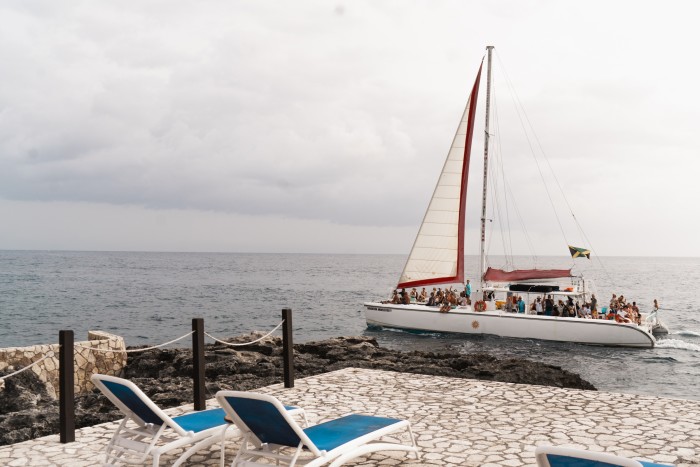
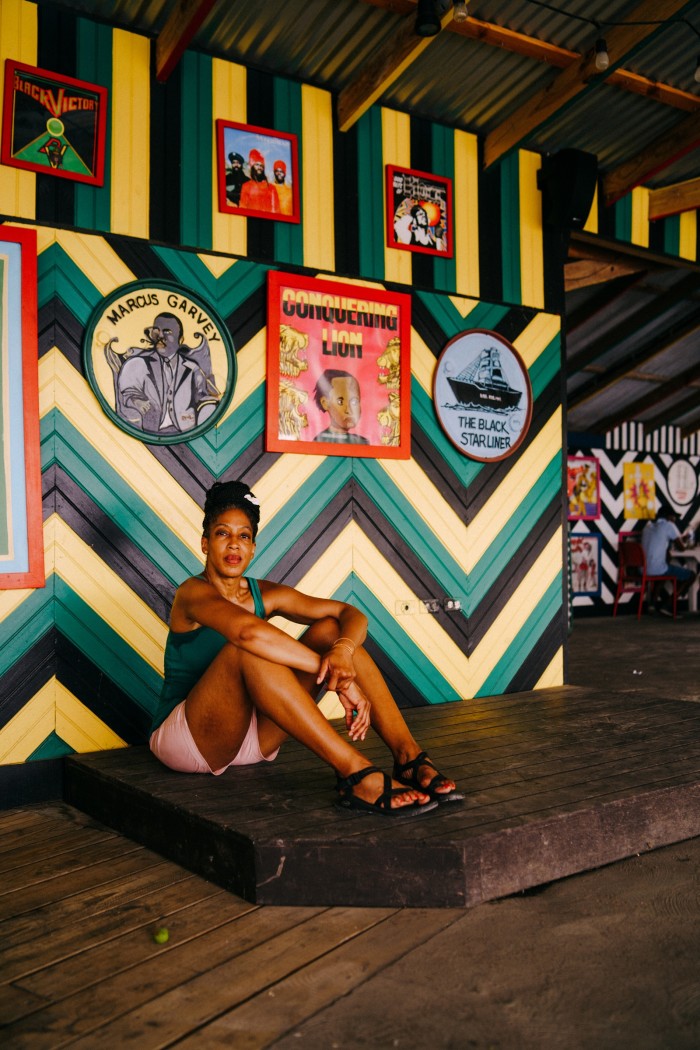
Education has always been the core focus of the Foundation, which was created in 2004 in partnership with the Ministry of Education. Rockhouse Foundation supports six schools in the Negril area, investing in communities for the long haul, and only hiring labour and support from within the communities it serves. On the drive to Sav Inclusive, Peter Rose tells me how the concept came about. “About eight or nine years ago, one of the staff at Rockhouse came to me and told me she had a son she’d been having challenges with and that he’d finally been diagnosed as having severe autism.” She was essentially left without resources or a suitable roadmap for how to handle the situation. “[Her story] just stayed with me, and I began to think about what we could do. And it became evident to me that having typical learning children and children with disabilities together in the same classroom is the way to go. It’s to the advantage of children with disabilities, and of children who are typical learners. But also good for their families, in the way it destigmatises children with special disabilities.”
Sav Inclusive is what’s known as an infant school in Jamaica, but it is equivalent to a pre-Kindergarten in America, for children aged three to five. There is a warm breeze blowing as Rose and I walk through the school grounds; lemon chiffon-coloured walls divide the open-air spaces, and large-lettered inspirational messages decorate the walls: “We’re in this together,” reads one. We occasionally pop our heads into classrooms; the groups are small by design, with fewer than 20 children per room. “We wanted each class to have three adults. So there’s a lead teacher, an assistant teacher and a caregiver in each classroom,” he tells me. Some of the kids wave affectionately at him as he greets them warmly by name.
Later, back at the hotel, I’m sitting on a deckchair on the small patio-like ledge that’s really just an expanse of rock surface jutting out from a cliff wall. The azure sea is directly below me; to one side is a bright red ladder I could use to climb down into it if I wanted to. There’s a party boat with loud music sailing on the water and moving in my direction. But the noise doesn’t bother me. The scenery is too beautiful. The sunlight glitters as though someone has thrown a handful of diamond chips onto the surface of the water.
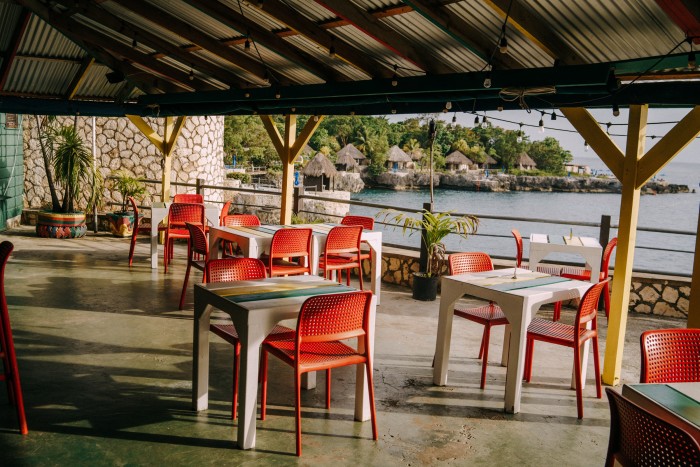
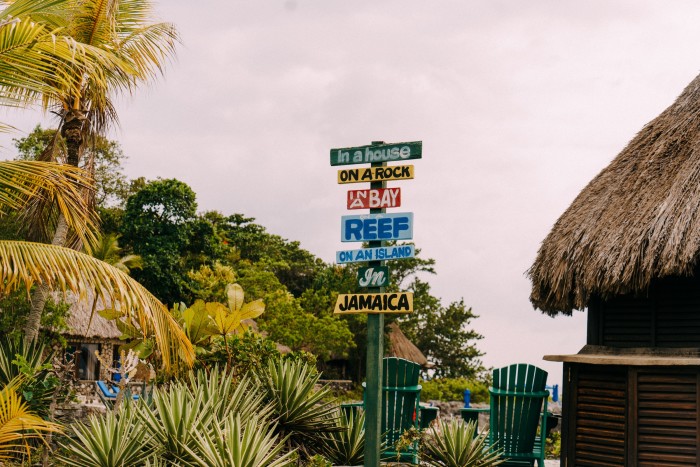
I’m thinking also about the events of the previous five days. Darby’s lilting voice telling me about Marcus Garvey and the serene quiet of GoldenEye; the way Avid’s face looked when he said he’d tried other places but found GoldenEye felt like home; the sunsets I’d seen from my villa just a few steps away; Bally answering my question with his own: “Why would I leave good people?”
And then the children at Sav Inclusive: the little girl I met who came to the school in 2017 and couldn’t say a word, and who last week, Rose tells me, called him “Uncle”. I’m thinking about all these things as the boat gets closer and the music gets louder, and people are waving at me from the deck, having the luxurious time of their lives. And I think about how the word “luxury” can mean so many things to so many different people at the same time. I am glad I came here, and got a small taste of the range of it all.
Enuma Okoro travelled as a guest of Cazenove + Loyd, cazloyd.com, which tailors trips to Jamaica and across the Caribbean; six nights in Jamaica, including GoldenEye and Rockhouse, from £2,500pp excluding flights
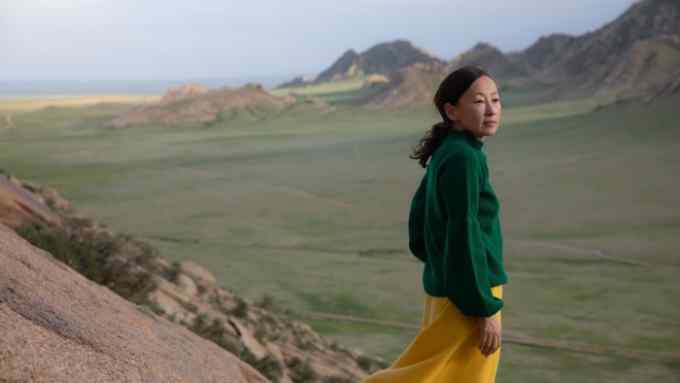
Comments